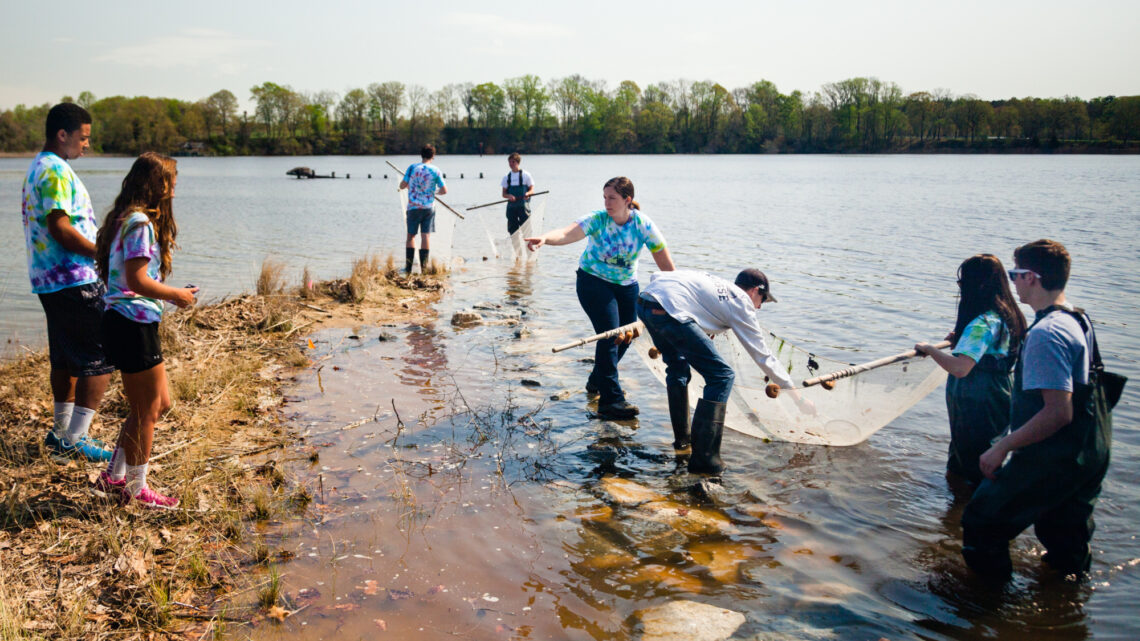Learn and Play Outside

There are many advantages to playing and learning outside. Being outside in nature can increase physical activity, improve wellbeing, encourage care for the environment, and promote learning. Incorporating nature into the school day can improve academic performance, behavior and attention, in addition to increasing student engagement.
Outdoor play can be encouraged with Nature Play Spaces. These spaces incorporate the natural landscape and use natural materials like tree stumps, rocks, branches, and water to get people playing in and with nature. Outdoor learning can happen in designated spaces like gardens, outdoor classrooms, or wild spaces. Learning outside can increase a student’s enthusiasm for and engagement with learning. Whether it is playing or learning, differing abilities of students should be considered so all can enjoy the benefits.
Connecting to Issue Investigation
Investigations looking at student health issues can lead to a solution of improving access to playing and learning outside because of the physical and mental health benefits. Investigations focused on increasing empathy of the natural world to get more people involved with environmental issues and action can be supported by more learning and playing outside. Increasing access to outdoor learning can also support future investigations by creating safe spaces for students to collect data and make observations.
For those working towards green school awards, this action can improve the health and wellness of students, teachers, and staff because engagement with nature benefits all ages and improves the effectiveness of environmental and sustainability education by offering more access to the outdoors.
Facilitating Student Action
Students should continue to have opportunities to share ideas and opinions throughout the process of identifying, planning, and implementing action. Listed here are just a few ways students can stay engaged while working on this solution—but there are many more! The complexity of each activity/task can be adjusted for each grade level.
Restore - students can work with the space they already have by making it safe and accessible for all students.
Create - students can create outdoor classrooms or nature play areas to share with other students at the school. Students should start by getting support from the administration, maintenance department, and other teachers so the space is used and maintained.
Educate - students can educate school staff, administrators, and parents on the benefits of playing and learning outdoors.
Advocate - students can advocate the school board for district-wide support of outdoor learning spaces. District-wide support can turn into financial support or mandates and resources to implement outdoor learning into curriculum.
Monitor - students can create surveys for other students and staff to learn if any changes (physical and mental health or empathy for the environment) occur after the installation and use of outdoor spaces.
Share and Celebrate - students can celebrate their work by sharing outdoor learning spaces and their research with the broader school community by giving tours, writing articles, press releases or inviting reporters from the school paper and local news agencies.
Learn and Play Outside Resources
Teaching outside takes some practice and requires different preparation and class management compared to classroom teaching. The Maryland Association for Environmental & Outdoor Education created a 5-part training series on Using the Outdoors as a Classroom. You can also check out the trainings offered by the Eastern Region Association of Forest and Nature Schools for nature-based instruction in early childhood education.
The Living Schoolyard Activity Guide includes over 130 activities for students in preK through high school that encourage outdoor learning and play. Activities range from place-based science lessons to community engagement.
Outdoor classrooms can take many forms. The Outdoor Classroom Design Guide from the Boston Schoolyard Initiative offers practical advice and ideas that would work for any school district on how to create or enhance a space.
Green Schoolyards America offers a wealth of information on learning and playing outside. Their section on Creating Outdoor Spaces offers practical tips and articles on how to create an outdoor space at school.
The Maryland Department of Natural Resources shares many ideas and pictures of Nature Play Spaces. From this site, scroll through ideas for activities, physical elements, and view pictures of examples from schools and parks.
